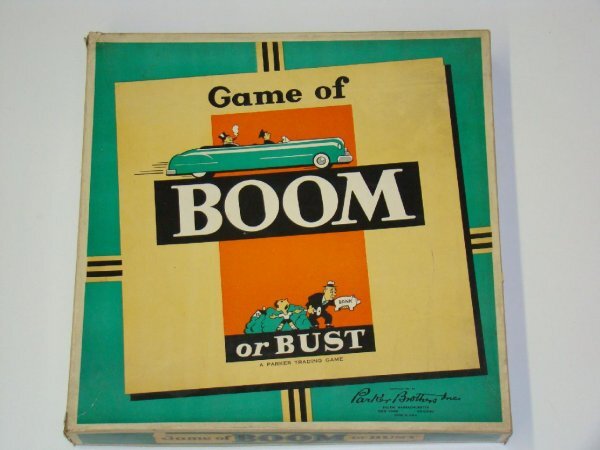Boomers, Stickers, and the Lifecycle of a Cool Neighborhood
“To feel at home in a place, you have to have some prospect of staying there.”
A number of years ago, I read an article at The Atlantic Cities (now CityLab) called the “The Lifecycle of a ‘Cool’ Neighborhood.” In it, the sociologist and historian Richard Greenwald describes the process by which neighborhoods go from being “the next big thing” to “over the hill.” And in New York City, writes Greenwald, declaring “the death of hip neighborhoods seems to be an endless [rite] of passage…”
It comes with the territory of knowing and labeling—articulating really—what matters in a rootless city. Neighborhoods come and go—and I mean that in the Brooksian Bo-Bo way.
During the 20th century it was Greenwich Village, Harlem, SoHo, Tribeca, the Lower East Side, and then Brooklyn. At first these neighborhoods are whispered about among those in the know. Within a short time the New York Times Real Estate section profiles them—and then the slide begins. These places are declared dead by those who have already moved on or those who have selected their neighborhood as the new, next paradise. You would need a sophisticated algorithm just to keep up. But it is great sport for certain New Yorkers.
What is almost always missing from these declarations is the simple understanding that people—ordinary, working-class people—have and will continue to live in these areas as their neighborhoods are changed.
Once upon a time, my wife and I lived in two close-in Portland neighborhoods, where we watched home prices double over the course of just a few years. Though we no longer live in a cool urban neighborhood, the rural community we’ve called home since 2010 was once literally voted one of the “Top 10 Coolest Small Towns in America”. (We were #9. The #1 coolest town that year? Oswego, New York, home to our friends at the Oswego Renaissance Association.) Though that was a decade ago, our town of Silverton, Oregon has continued to grow, thanks in part to an influx of young people who can’t afford to live in the cool neighborhoods in Portland anymore.
For all Silverton has going for it—and it is a lot—I regularly think back to Greenwald’s article. It reminds me (a) that neighborhoods have life cycles, (b) that my little town will not always be considered cool, (c) that trendy is not the same thing as flourishing, and (d) that when my family and I made a commitment to this place it was for better or for worse, through thick and thin. In fact, we sometimes talk about it as a “covenant”; to whatever extent it is within our control, we settled here for good.
One of my heroes, the writer and teacher Wallace Stegner, distinguished between two archetypes of the American West: the “boomer” and the “sticker.” From gold strikes to flipping houses, boomers live in perpetual motion, always looking for Easy Street or the next big killing. Meanwhile, stickers quietly go about the business of staying put, rooting themselves in a place and a community for the long haul. The mythology of the American West—not to mention our NFL mascots—tends to glorify the boomers (Cowboys, ’49ers, etc.) and overlook the stickers.
I’ve come to recognize even in my own life the boomer’s tendency toward perpetual motion. I moved all the time as a kid because of my dad’s job. Even into adulthood, every two years I would get the urge to pull up stakes and light out for new territory. It was a compulsion so powerful, and so predictable, that resisting it was like working against muscle memory. This biennial urge to move was one of the reasons we wanted to commit to Silverton for the long-haul. It was the one big decision that made a hundred smaller decisions for us. Now, ten years after moving to Silverton, I can’t imagine living anywhere else. I love it so much. The people here have welcomed us so completely—in part, I believe, because we made it plain that we were here forever.
These days, I spend less time gazing at the horizon and more time paying attention to where I am now. Cattle trails and gold mines have become less interesting to me than a living community held together by the bonds of mutual support and affection that only develop in proximity and over time.
Is Silverton still cool? I think we have too many antique stores to qualify. But it is something better, deeper, richer, and more interesting to me: It is Home.
Top image of Silverton, Oregon via Flickr.



John Pattison is the Community Builder for Strong Towns. In this role, he works with advocates in hundreds of communities as they start and lead local Strong Towns groups called Local Conversations. John is the author of two books, most recently Slow Church (IVP), which takes inspiration from Slow Food and the other Slow movements to help faith communities reimagine how they live life together in the neighborhood. He also co-hosts The Membership, a podcast inspired by the life and work of Wendell Berry, the Kentucky farmer, writer, and activist. John and his family live in Silverton, Oregon. You can connect with him on Twitter at @johnepattison.
Want to start a Local Conversation, or implement the Strong Towns approach in your community? Email John.